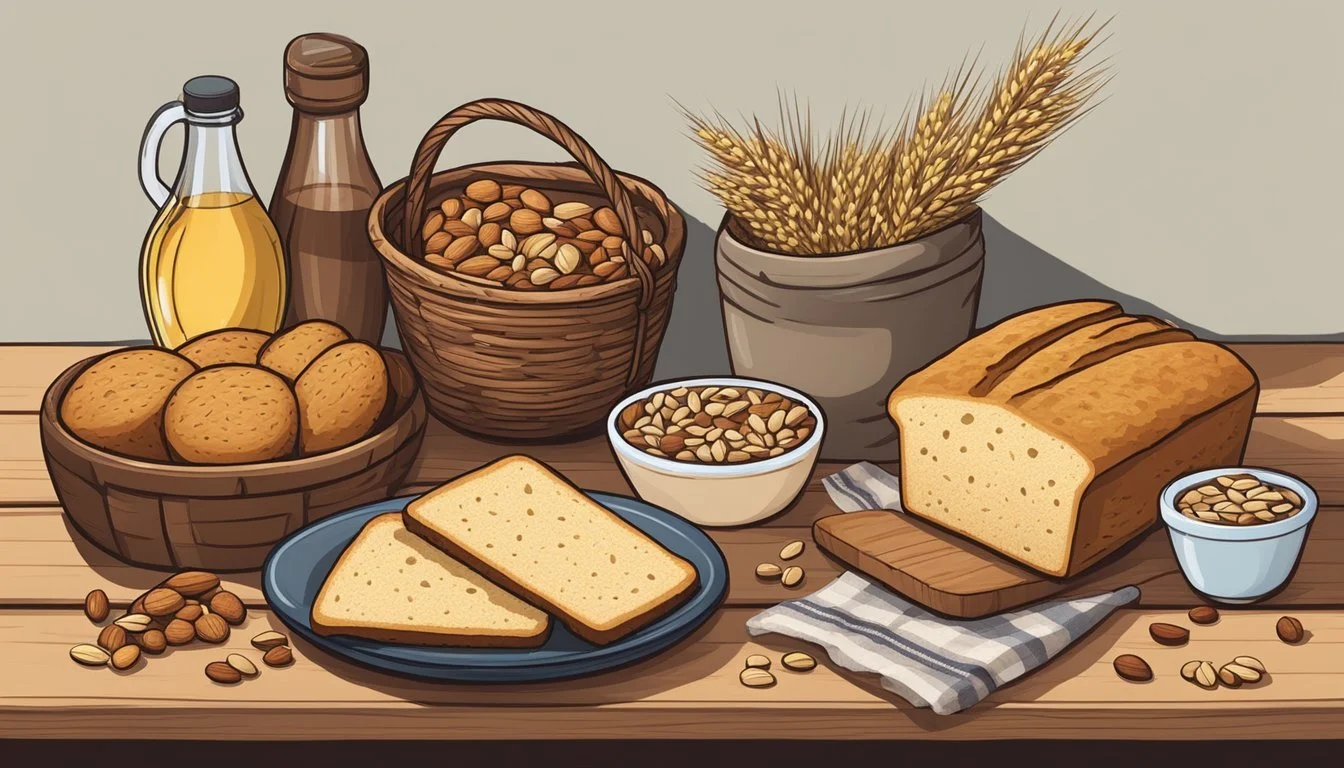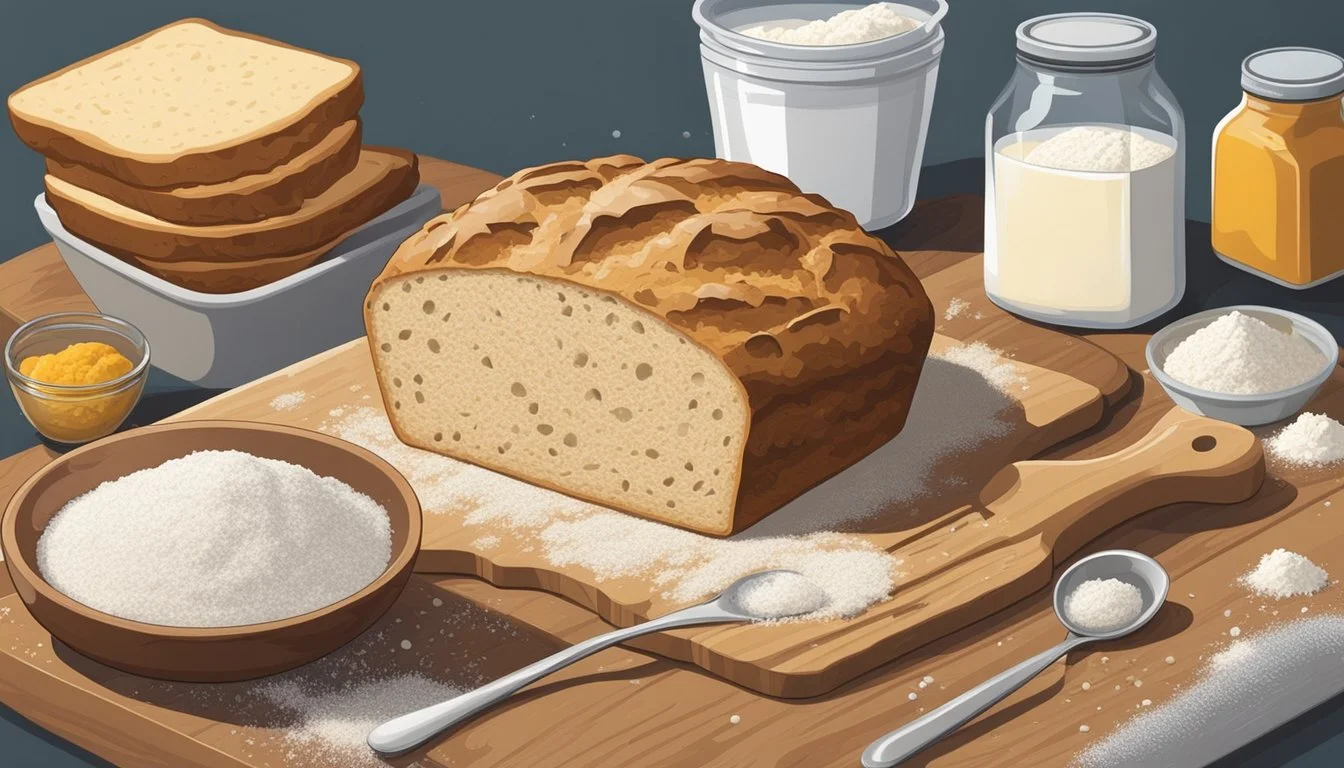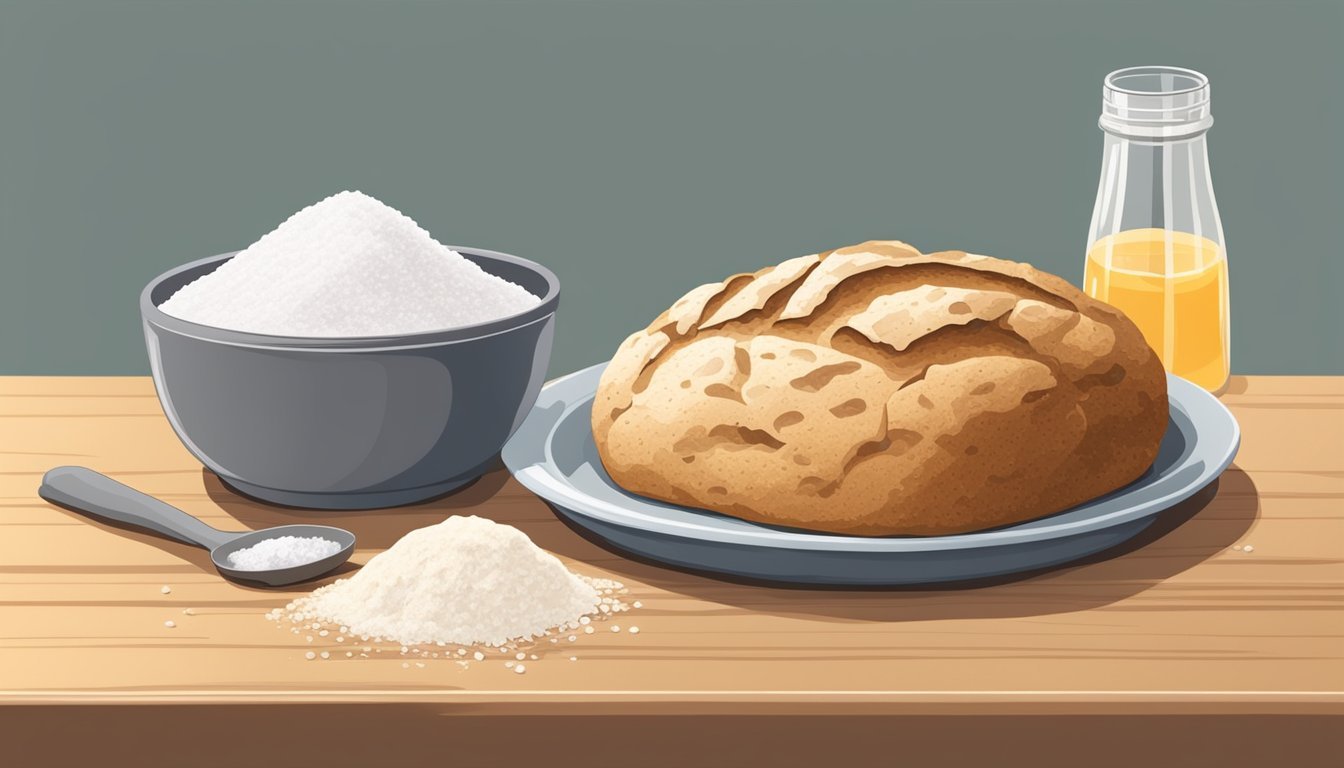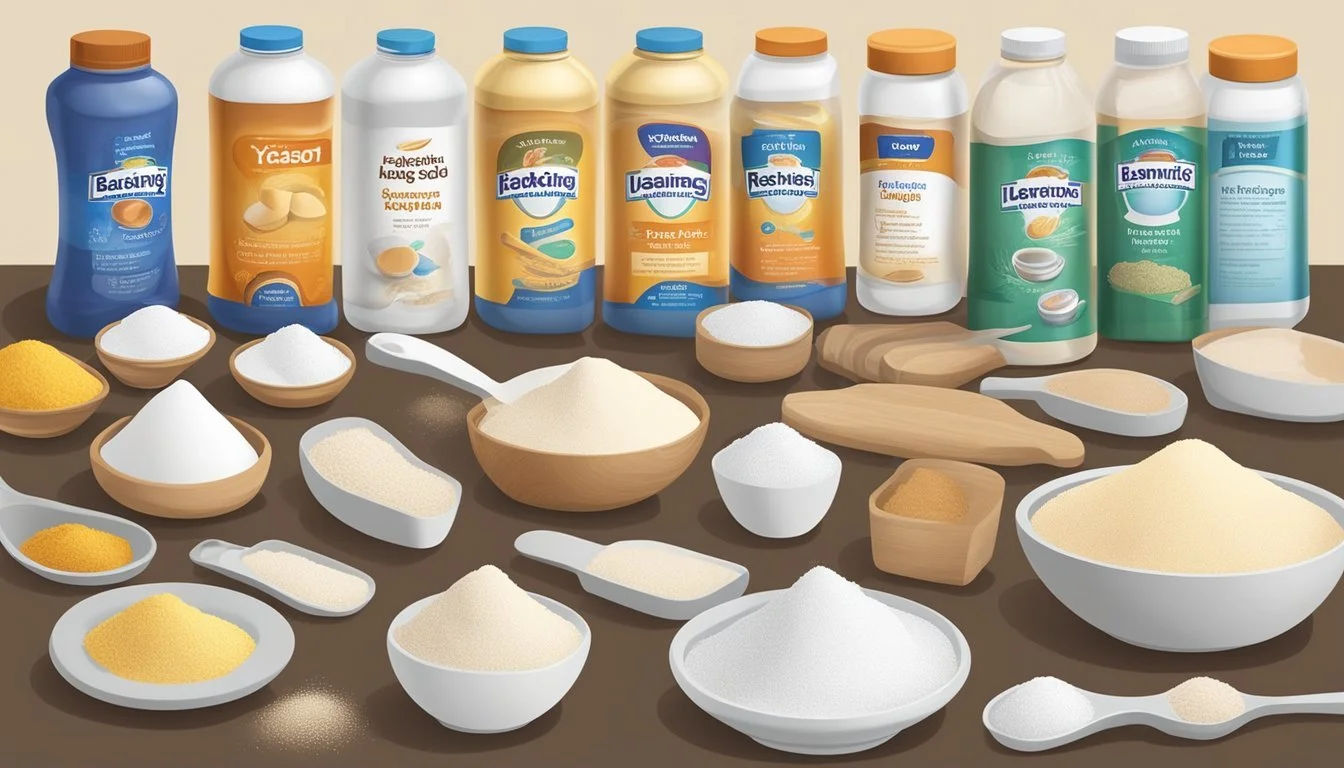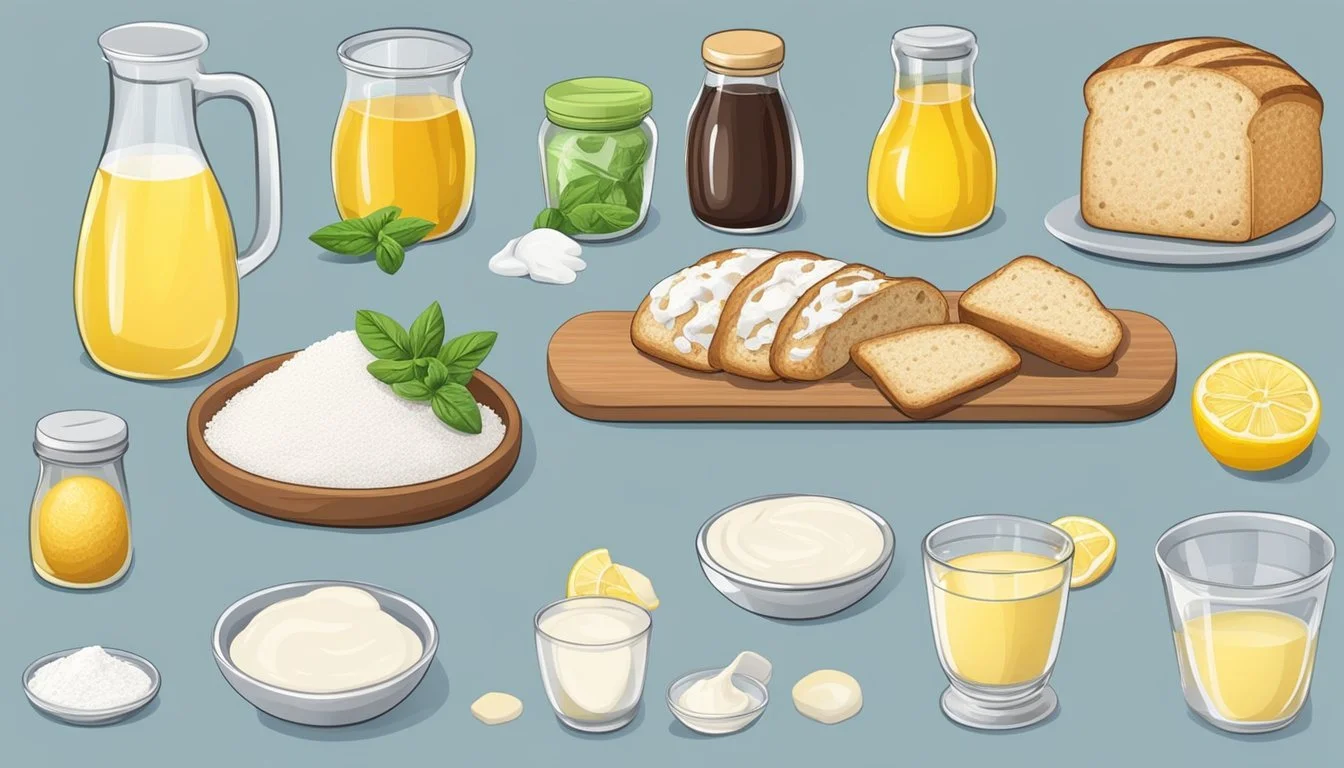Soda Bread Substitutes
Alternatives for Traditional Irish Baking
Soda bread is a quintessential component of Irish cuisine, emblematic of simplicity and tradition. Unlike standard yeast breads, soda bread rises through the reaction between baking soda and acidic ingredients, typically buttermilk. However, buttermilk isn't always on hand in every kitchen, and dietary restrictions can often require substitutes. This can lead to the exploration of alternative ingredients that can mimic the tender crumb and slight tang that buttermilk imparts, without compromising the bread’s distinct texture and flavor.
Substitutes for buttermilk in soda bread range from soured milk, a combination of milk and lemon juice or vinegar, to non-dairy options like almond or soy milk with an acid added for vegan adaptations. Each alternative offers a different nuance, highlighting the bread’s versatility. Traditionalists might argue that deviations from buttermilk change the authenticity of soda bread, but the modern cook appreciates the flexibility and potential for innovation.
Moreover, the adaptability of soda bread extends beyond just dairy substitutions. The inclusion of ingredients such as dried fruits, nuts, or seeds can transform the character of the bread from plain to savory or sweet. While purists may prefer the staple recipe, these variations cater to a broader range of palates and occasions, ensuring the enduring popularity of this classic bread.
Understanding Soda Bread
Soda bread is a quick bread, traditionally made with simple ingredients like flour, baking soda, buttermilk, and salt. It is known for its characteristic texture and taste.
History and Basics
Soda bread originated in Ireland and is particularly associated with Irish cuisine, although it has gained popularity worldwide. The key to its simplicity and rapid preparation is the use of baking soda as a leavening agent instead of yeast. When baking soda (sodium bicarbonate) comes into contact with acidic buttermilk, it reacts to produce carbon dioxide, causing the dough to rise. This bread is typically denser than yeast-leavened bread but is valued for its crusty exterior and soft interior. Being a quick bread, it can be made and baked promptly, making it a practical choice for bakers of all skill levels.
Nutritional Profile
In terms of nutrition, the profile of soda bread can vary based on the ingredients used:
Standard Soda Bread:
Carbohydrates: Provides energy through starches.
Fibre: If wholemeal or wholegrain flours are used, fibre content is increased, aiding in digestion.
Protein: Contains a moderate amount from the grains and dairy used.
Fats: Generally low in fat unless extra butter or eggs are included in the recipe.
Gluten Content: Traditional soda bread is made with wheat flour and contains gluten, a protein that provides elasticity to the dough. However, gluten-free varieties can be made using alternative flours for those with celiac disease or gluten sensitivity.
Health benefits of soda bread may include the provision of essential nutrients like B vitamins (from fortified flours), calcium (from buttermilk), and the potential benefit to digestive health due to its fibre content in wholegrain versions. Soda bread is not typically associated with weight loss and should be consumed as part of a balanced diet.
Key Ingredients in Soda Bread
Soda bread relies primarily on baking soda and buttermilk for its unique texture and flavor. These ingredients interact to ensure a proper rise, contributing to the bread's distinctive characteristics.
Role of Baking Soda
Baking soda, or sodium bicarbonate, is a crucial leavening agent used in soda bread. Its role is to react with acidic components in the dough—most notably buttermilk—to produce carbon dioxide gas. This reaction helps to raise the dough and create a light and airy texture. The amount of baking soda must be balanced to avoid affecting the bread's flavor.
Importance of Buttermilk
Buttermilk is integral to soda bread, not only for its tangy flavor but also for its acidity. When buttermilk is mixed with baking soda, it fosters a chemical reaction that causes the dough to rise. This symbiotic relationship between buttermilk's acid and the base nature of baking soda is essential for achieving the bread's characteristic texture. Additionally, buttermilk contributes to the bread’s moistness and tenderness.
Salt: Enhances flavor and regulates yeast activity.
All-purpose Flour: Provides structure; the gluten content is just right for the tender crumb of soda bread.
Leavening Agents and Their Functions
Leavening agents are essential for giving bread its light and airy texture. They work by producing gases that expand and aerate the dough, leading to a rise in the baking process. There are two main types of leavening agents used in soda bread: chemical leaveners and natural leavening.
Chemical Leaveners
Chemical leaveners, such as baking powder and baking soda, cause dough to rise by producing carbon dioxide. Baking soda reacts with acidic ingredients like buttermilk, yogurt or molasses to produce this gas. On the other hand, baking powder contains both an acid and a base and only needs a liquid to activate.
Baking Soda Substitutes:
Potassium bicarbonate: Can replace baking soda without adding sodium.
Baking powder: Double-acting baking powder can be used, though the quantity may need to be adjusted for the right rise.
Common Ratios:
Baking soda: Typically, one-quarter teaspoon per cup of flour.
Baking powder: About one teaspoon per cup of flour.
Natural Leavening
Natural leavening involves the process of fermentation, where yeast metabolizes sugars to produce carbon dioxide and alcohol. This not only causes the dough to rise but also contributes unique flavors to the bread.
Sourdough starter: Captures wild yeast and bacteria from the environment.
Egg whites: When beaten, they can incorporate air, offering some leavening through steam production as they heat.
Fermentation Factors:
Temperature: Warmer environments typically speed up the fermentation process.
Time: Longer fermentation leads to more complex flavors in the bread.
Baking Soda Substitutes Explained
When baking soda is unavailable, one can maintain the rise and texture of soda bread by using alternative ingredients. The key is to replicate the leavening effect that baking soda imparts.
Utilizing Baking Powder
Baking powder can serve as a baking soda substitute. It contains baking soda and an acid, typically cream of tartar. To replace baking soda with baking powder, triple the quantity of baking soda called for in the recipe. This substitution will help the dough rise and keeps the texture light and fluffy.
Substitution Ratio: 1 teaspoon baking soda = 3 teaspoons baking powder
Adjustment: Reduce any additional salt in the recipe by half to avoid over-salting.
Employing Egg Whites
Egg whites, when beaten to a foamy and stiff consistency, can act as a leavening agent. They incorporate air into the batter, contributing to a light texture. Substitute an equal volume of whipped egg whites for baking soda.
Rise: Egg whites work better as a substitute for recipes originally asking for baking powder, but they can aid in leavening to a lesser extent when replacing baking soda.
Method: Beat egg whites until stiff and fold into the mixture carefully to retain the air.
Acidic Alternatives
Substitutes like vinegar or lemon juice react with the other ingredients to produce carbon dioxide, which helps the bread to rise.
Vinegar: For each teaspoon of baking soda, half a teaspoon of white vinegar can be used. It's suitable for recipes where the acidity does not overshadow the desired flavors.
Lemon juice: Replace one teaspoon of baking soda with an equal amount of lemon juice. This alternative works well for recipes that can benefit from a slight lemony flavor.
Club soda: It contains carbonation that can mimic the leavening effect. Club soda can replace both the liquid and the leavening agent in a recipe. Reduce other liquids accordingly.
Knowledge of these substitutes is essential for any baker and will ensure that the absence of baking soda does not compromise the quality of their soda bread. Each alternative could impact flavor and texture, so it is important to choose an appropriate substitute for the intended outcome.
Alternative Ingredients in Baking
When baking, using alternative ingredients can often yield comparable, if not superior, results depending on the desired outcome. This section explores flour variations, different dairy products, and sweetener and flavor enhancements that can alter the texture, taste, and nutritional content of baked goods.
Flour Variations
Alternative flours can greatly affect the structure and flavor of baked items. Self-rising flour is a mixture of all-purpose flour, baking powder, and salt, often utilized for its leavening capabilities which negates the need for additional baking powder. All-purpose flour is a versatile flour that is commonly used in baking, but it does not have leavening agents added. When substituting for all-purpose flour, one can explore various flour substitutes such as almond flour, coconut flour, or oat flour, which may offer different nutritional benefits and flavors. It's important to note these substitutes can behave differently in recipes, thus adjustments may be necessary.
Self-rising flour: already contains leavening agents, use directly in recipes requiring it.
All-purpose flour: requires separate leavening agents like baking powder.
Alternative Dairy Products
Dairy products contribute to the moisture, fat content, and texture in baking. Buttermilk is often used for its acidic properties that react with baking soda, providing lift in recipes. One can replace buttermilk with yogurt or heavy cream that has been thinned with a bit of milk. Yogurt can add a similar tanginess, while heavy cream, especially when acidified with lemon juice or vinegar, can replicate the rich texture and rise.
Buttermilk substitutions:
Yogurt (same measurement)
Heavy cream with a teaspoon of acid per cup for mimicry of buttermilk's effect
Sweetener and Flavor Add-ins
Sugar not only sweetens but also adds color and bulk. It can be replaced with alternatives like honey, maple syrup, or agave to change the flavor profile. When adding acidic flavors, such as citrus zest or vinegar, one must consider how they interact with other ingredients like baking soda, which requires an acid to activate.
Sweetener substitutions:
Honey or maple syrup (use less than sugar due to higher sweetness)
Acidic flavor additions:
Citrus zest, vinegar (balance with baking soda for leavening effect)
Substitute Techniques in Recipes
When adapting soda bread recipes with substitute ingredients, maintaining the proper leavening and texture is crucial. Techniques vary with the kind of substitutes used, especially for ensuring that the bread rises adequately and retains its structure.
Adjusting Leavening Ratios
In soda bread, the leavening agent is typically baking soda, which reacts with acidic ingredients to form carbon dioxide bubbles, allowing the bread to rise. If a cook doesn't have baking soda on hand, they can use baking powder as a substitute, but must adjust the ratio due to baking powder's composition of baking soda and cream of tartar—an acidic ingredient—which makes baking powder twice as effective as baking soda. The general rule is to use three parts baking powder to replace one part baking soda. Here's a table with suggested ratios:
Baking Soda Baking Powder Notes 1 tsp 3 tsp Reduce acidic ingredients in the recipe accordingly.
To further keep the texture intact, one might also need to reduce the amount of salt in the recipe since baking powder contains sodium.
Adapting Mixing Methods
The structure of soda bread is often affected by how ingredients are combined. When substitutes like whipped egg whites are used, they must be folded into the batter to incorporate air, adding lift. Protein in the egg whites helps to form a foamy and stiff structure when beaten and measured properly with a measuring cup. One can substitute an equal volume of whipped egg whites for baking soda, but they must remember to adjust the moisture level of the dough accordingly by reducing other liquid ingredients. The process should be performed as follows:
Beat egg whites until foamy and stiff peaks form.
For every teaspoon of baking soda, use approximately 2-3 whipped egg whites.
Measure the egg whites, remove an equal amount of liquid from the batter, ensuring the batter doesn't become too runny.
Fold the whipped egg whites into the batter or dough gently, preserving the air and structure.
Making Soda Bread without Baking Soda
When crafting soda bread without baking soda, one must carefully select and apply alternate leavening agents to maintain the bread's texture and rise.
Recipe Modifications for Breads and Quick Breads
Leavening Alternatives: To achieve the necessary rise in quick breads such as soda bread, leavening substitutes are crucial. Baking soda, often called sodium bicarbonate, typically interacts with acidic components in the recipe to create carbon dioxide, aiding in the rise and imparting a tender texture to the final product. Without it, one could utilize baking powder, which contains baking soda but also includes an acidifying agent and a drying agent, typically cornstarch.
Baking Powder Ratio:
For every teaspoon of baking soda in the original recipe, replace with 3 teaspoons (1 tablespoon) of baking powder.
If buttermilk is part of your recipe, it can still be used with baking powder. The presence of buttermilk helps improve the taste and structure of the bread without the need for additional adjustments.
Club Soda as a Liquid Substitute:
Club soda can imitate the effects of baking soda, as it is carbonated and provides leavening. When using club soda, reduce other liquids in the recipe accordingly to maintain the batter consistency.
Whipped Egg Whites:
Whipping egg whites until stiff and folding them into the batter can also contribute to the structure and volume of the final product. This method is particularly effective in quick breads where a lighter texture is desirable.
The success of these substitutes will largely depend on their precise measurement and the method of incorporation into the batter, ensuring even distribution throughout the mixture to prevent an inhomogeneous texture on the bread's surface. Maintaining the balance of dry and wet ingredients is critical to avoid either a dense or overly crumbly bread.
Baked Goods and Substitutions
In the realm of baked goods, substitutions play a crucial role in ensuring the desired lift and volume, especially when traditional leavening agents are unavailable.
Cookies and Cakes
In cookies and cakes, leavening agents are key to achieving a fluffy texture. For example, chocolate chip cookies and biscotti depend on baking soda for their characteristic lift. When baking soda is not an option, a combination of baking powder substitutes, made from cream of tartar and baking soda, can be employed. Specifically:
For 1 teaspoon of baking powder, use 1/2 teaspoon cream of tartar plus 1/4 teaspoon baking soda.
Angel food cake requires a delicate structure that is typically supported by whipped egg whites. In its absence, alternative leavening methods include:
Use whipped egg whites: Beat egg whites until stiff and substitute an equal volume for baking soda.
Muffins, Biscuits, and Pancakes
Muffins, biscuits, and pancakes also require leavening agents to achieve a light and airy profile. One common substitution for baking soda in these goods includes:
Milk and acid: Combine 1 cup of milk with 1 teaspoon lemon juice or vinegar to replicate the leavening effect in the absence of baking soda. This is particularly effective in recipes like waffles that require a tangy lift.
Baking alternatives should maintain the integrity of the primary ingredients while providing the necessary chemical reaction to keep the baked goods' texture consistent. Substitutions must be measured and swapped with precision to replicate the environment that baking soda typically provides.
Consumer Considerations
When substituting ingredients for soda bread, consumers should contemplate both availability and nutritional impact. The section will explore common grocery store finds and health-conscious alternatives, providing a comprehensive guide to making informed choices.
Grocery Store Finds
Most grocery stores offer a range of products that can replace baking soda in soda bread. Potassium bicarbonate is one such substitute, offering a similar leavening effect without the sodium content, which is beneficial for those monitoring their sodium intake.
Availability: Readily found in the baking aisle.
Nutritional Information: Lower in sodium, making it a heart-friendlier option.
Healthy Baking Alternatives
Home bakers looking for healthier options have a variety of substitutes that can enhance the nutritional value of soda bread. A prime example is substituting sugar with alternatives like honey or maple syrup to provide minerals and potentially aid in weight loss when used in moderation.
Ingredients: Use of natural sweeteners and whole ingredients.
Health Benefits: May offer improved nutrition with additional vitamins and minerals.
Troubleshooting and Tips
In soda bread baking, understanding the function of leavening agents and the intricacies of dough behavior is crucial for achieving the desired texture. Two key aspects to focus on are common baking issues and the importance of trial and error.
Common Baking Issues
Leavening Agents: Soda bread typically relies on baking soda as a leavening agent. If baking soda is unavailable, one can opt for potassium bicarbonate, using an equal amount as a substitute. For those preferring a lighter and fluffier texture, if the recipe calls for 1 teaspoon of baking soda, 3 teaspoons of baking powder can be used instead.
Dough Structure: Achieving the correct dough structure is vital. The dough should be moist but not too wet. A dough that's too dry will not rise well and can result in a dense bread, while overly wet dough can lead to a bread that's too crumbly.
Smell and Flavor: The smell of the bread can indicate if the chemical leaveners are active. A balance in smell often correlates with a good flavor profile and indicates a correct chemical reaction in the bread.
Trial and Error in Baking
Texture Tweaks: Perfecting the texture involves adjusting the amount of liquid and flour to avoid a dough that's too tight or too slack. The baker should look for a balance to achieve a final product that's neither too dense nor too cake-like.
Rise Right: A correct rise is essential. If the soda bread is not rising as it should, it may be due to expired leavening agents or incorrect oven temperature. Bakers should ensure that their chemical leavening agents are fresh and that they preheat their ovens for consistency.
Impact of Ingredients: Trial and error play a significant role in finding the right substitute that doesn’t compromise the bread's structure or flavor. Each substitute for a chemical leavener will vary slightly in its effect on the bread, and adjustments may be required.
In summary, attentive bakers can troubleshoot these common issues and fine-tune their approach through trial and error to achieve the optimal rise, flavor, and texture in their soda bread.

